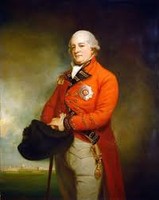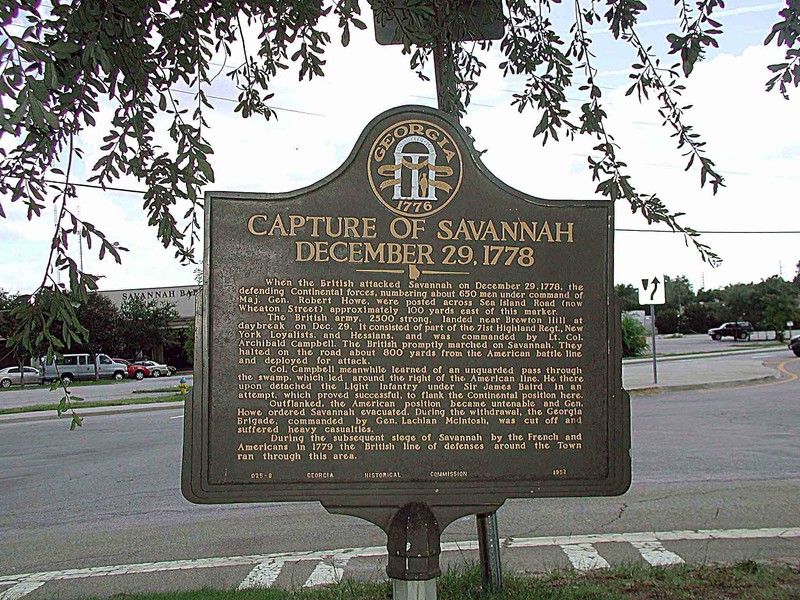Capture of Savannah Historical Marker
Introduction
Text-to-speech Audio
Images
The British leader, Archibald Campbell, that traveled from New York to Savannah Georgia with his troops to regain control of the colony.

The Capture of Savannah marker, located in Savannah Georgia.

Backstory and Context
Text-to-speech Audio
On December 29, 1778, British forces captured Savannah. The British were focusing on capturing the leading cities as well as crushing the small army of American commander Robert Howe. Archibald Campbell led British troops and their capture of the city was only the first of many parts of the empire's southern strategy. The British were trying to regain control of the Southern colonies by appealing to the Loyalist sentiment, but most Southerners were lukewarm in their support for either side. While some British commanders mobilized enslaved persons as soldiers and laborers by promising freedom, this strategy turned white colonists against the Crown and was not a prominent feature of the war in this region.
The British force that entered Savannah consisted of about 2,500-3,600 troops while the American rebels near Savannah only commanded 650-900 men. General Henry Clinton, sent Lieutenant Colonel Archibald Campbell and his troops from New York to attack Savannah. In addition, the commander of British forces in Florida, General Augustine Prevost, was sent to Georgia to help with the larger mission of controlling the Southern colonies.
Britain's troops from New York on December 23rd and Campbell quickly recognized his substantial numerical advantage. Campbell was able to capture a large group of the American army and took them as prisoners. The British also captured Sunbury and Robert Howe retreated with only around 340 soldiers. With about half of his force captured, killed, or deserting, General Howe was discredited in the eyes of many American military leaders and later removed from his independent command.
Sources
British capture Savannah, Georgia. History. November 13, 2009. Accessed February 17, 2019. https://www.history.com/this-day-in-history/british-capture-savannah-georgia.
